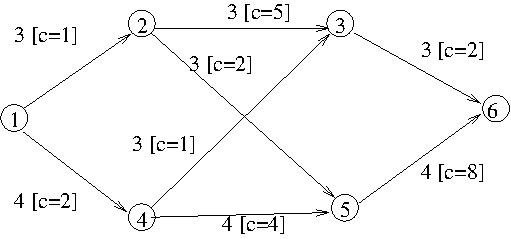
As for the maximum flow, we are given a transport network (a directed graph with capacities associated to edges, plus a source and a destination vertex). Additionaly, each edge has a cost.
In addition to the maximum flow problem, a flow also has a cost. The cost is the sum, for all edges, of the flow along the edge multiplied by the cost of the edge.
In other words, the cost of an edge is the cost of transporting each unit of flow along that edge.
The goal is to find a maximum flow and, among all possibilities to achieve it, to get one that also minimizes the cost.

First step is to obtain a maximum flow regardless of the cost. Then we minimize the cost while keeping the value of the flow constant.
We repeat the following steps:
Maximum flow (flow=7, cost=1*3+2*4+5*3+0*2+0*1+4*4+2*3+8*4=80):
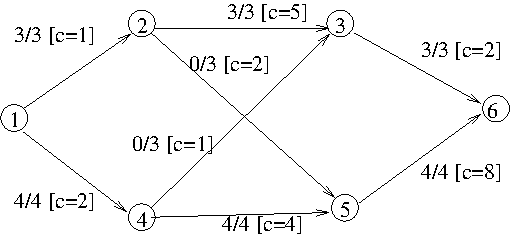 with residual graph
with residual graph 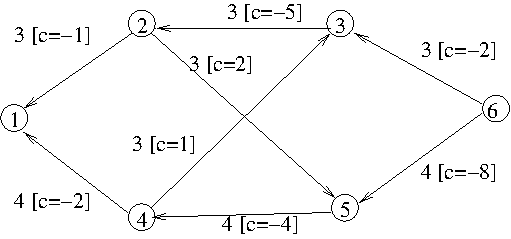
After using negative cost cycle 2, 5, 4, 3, 2 (capacity = 3, cost=-6):
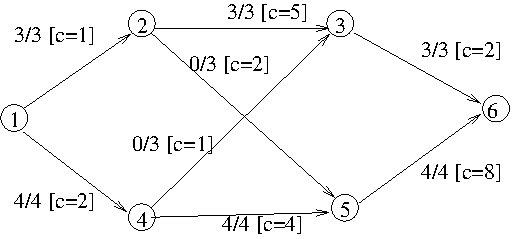 with residual graph
with residual graph 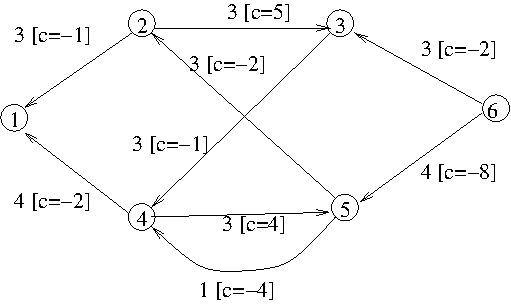
No negative cost cycle can be found. Final flow=7 of cost=80-18=62.
Radu-Lucian LUPŞA